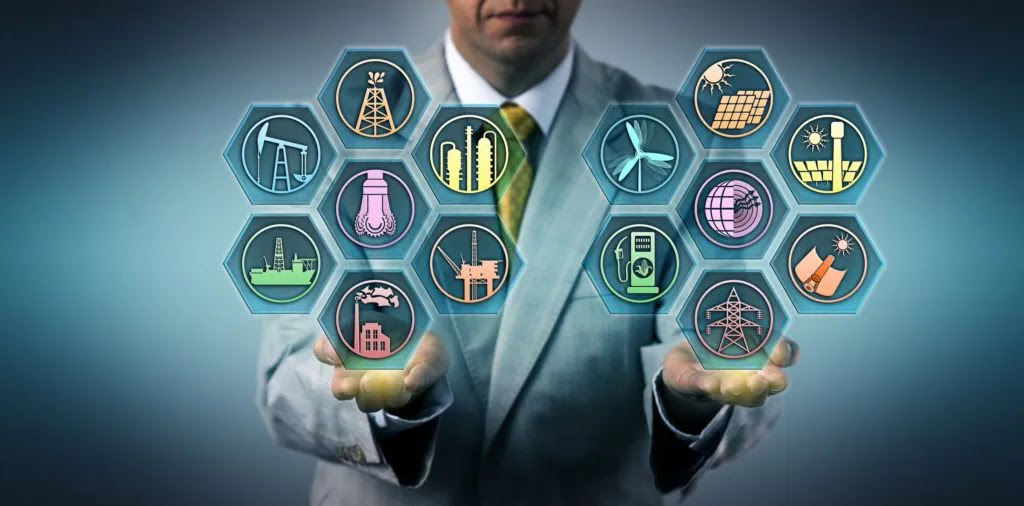
Unlocking The Potential Of Digital Twins In Drilling Oil Wells
Image Source: DNV
As an industry at the forefront of technology that already works with dynamic software models, oil and gas experts have begun exploring new digital methods to ensure efficient and safe operations and aid in designing new techniques and facilities for drilling.
“The effective use of digital technologies in the oil and gas sector could reduce capital expenditures by up to 20 percent; it could cut operating costs in upstream by 3 to 5 percent and by about half that in downstream,” according to a study by McKinsey & Co. analysts.
Digital twin technology can transform how oil and gas companies manage and utilize their data. From collision prevention to inventory tracking, and improved employee training programs, the benefits of digital transformation in the oil and gas industry are endless.
What is a Digital Twin?
Digital Twins are virtual representations of a physical object or process that allows for analysis of data and systems involved in a new concept before it is manifested.
These Twins act as a bridge between the physical and digital world, using “smart” components containing sensors that gather data about the real-time status, working condition, and position of a physical item, such as an offshore drilling rig.
The data is sent to a cloud-based system, which is stored and analyzed, then combined and compared to other relevant data so that the Twin can simulate the physical object.
Additional information integrated with the sensor data into the Twin includes engineering content, such as diagrams and specifications, financial considerations like customer demand and supply disruption, and even uncertainties like weather.
The Twin is constantly updating in real-time so quick decisions can be made using all available information.
The concept has caught on rapidly, being implemented in various industries, from transport and manufacturing to healthcare. In the oil and gas industry, Digital Twins have become an important trend in drilling oil wells.

Impacts of the Digital Twin Technology in Drilling Oil Wells
1. Pad Placement and Construction
Digital Twins are used to reduce the risk of rig “standby time” caused by environmental or machinery obstacles by virtually planning and simulation pad construction far in advance.
2. Monitoring Rig Move Status
Real-time monitoring of both short and long-distance rig movement enables companies to better predict the timing for additional 3rd party services such as welders, heavy equipment cementers, and other crews; reducing the amount of standby time charged.
3. Repair and Maintenance Tracking
Digital Twins enables experts to immediately and remotely obtain information on any piece of rig equipment including part numbers, maintenance dates, and real-time sensor readings.
Having the ability to access this information is valuable in reducing costs associated with premature equipment complications and reducing the time spent directly working on equipment.
4. Inventory Tracking
Supervisors and company stakeholders conduct remote “site visits” to determine exactly what equipment is on location (such as directional tools, drilling chemicals, and casing).
Twin “remote-visibility reduces the risk of downtime from having to wait on specific equipment or having an overabundance. The Twin is able to track the capacity and output of machinery, both historical and in real-time.
5. Real-Time Operations Centre (RTOC)
Twins allow experts to virtually “transport” themselves to the site to see first-hand all relevant data and statistics, reducing potential rig placement and establishment errors such as collision, spacing, and road allowance issues.
Well planning efficiency is also greatly increased with the ability to pre-plan wells and communicate with geology experts in regards to landing points.
Oil Majors Creating Digital Twins
1. Echo (Equinor)
Equinor has developed a Digital Twin named “Echo,” which is used to access and visualize data from a range of cloud-based databases.
Equinor has also been exploring the use of the “digital field worker,” whereby employees in the field can effectively “bring their office with them.” Issues that previously had to be resolved onsite or onshore (such as office trips and physical signatures) can now be resolved through digital tools.
Equinor says that over 6,000 employees will adopt advanced digital solutions such as Echo during 2020, adding that “Everyone with access can enter the digital twin at any time, irrespective of whether they are onshore at the office, or offshore on the installation.”
2. APEX (BP)
BP is using its Digital Twin, APEX, a production optimization tool to create a virtual copy of all the company’s production systems throughout the world.
APEX is also a surveillance tool, capable of spotting issues in the field before they have a chance to affect production. The Twin can be used to test ‘what if’ scenarios; by pairing the model with actual data, potential irregularities can quickly be spotted and solved optimally.
The roles of Digital Twins in the oil and gas industry will only continue to grow, from subsurface modeling and the design of rigs to optimizing production and safety.
The establishment of this sophisticated technology is complex and expensive but the evidence suggests that the financial and practical rewards are worth the investment.
Manup is here to support your Digital Twin applications
Manup partners with training providers who deploy proprietary simulator systems to construct digital twins of the well to be drilled and run the entire crews through the plan thus delivering unique functionality to achieve dynamic drilling simulation training experiences for clients globally. We continue to lead the provision of skilled workers in the onshore and offshore drilling sector.
Sign up on Manup to get hired on the next oil and energy projects, or hire pre-vetted skilled workers from Manup for your next project.
Related Posts
- Top 8 Trends in the Oil and Gas Industry to Watch Out in 2022
- Virtual Reality’s Increasing Role In Oil And Gas Training Programs
